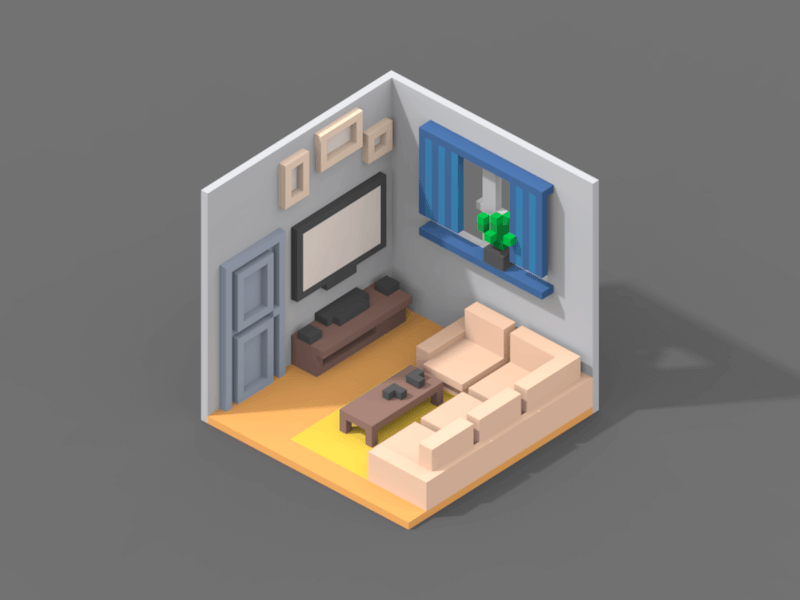Learning 3D Modeling in 14 Weeks
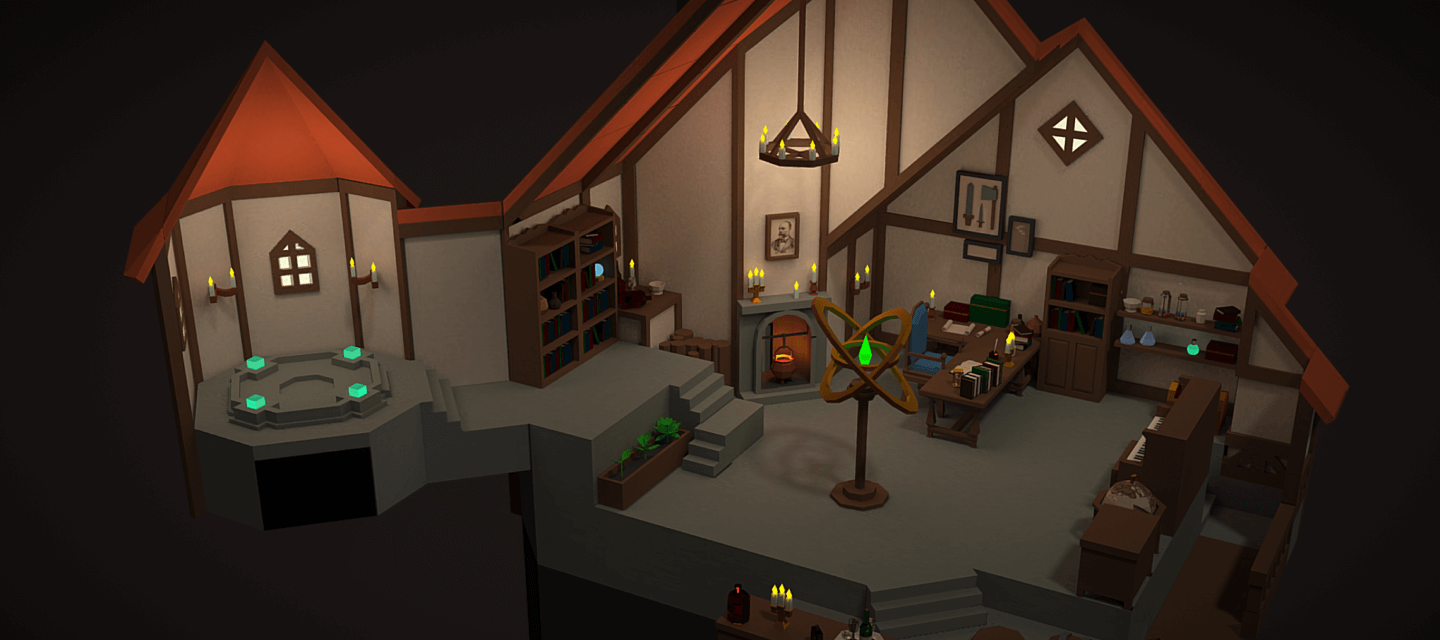
From March to May 2017, I picked up 3D modeling skills. I started with zero 3D experience (couldn’t even play 3D games well), and I’m now able to create almost everything I want in the low poly style. My models also won an honorable mention and a staff pick on Sketchfab.
I want to share this journey and my methodology—I’m pretty good at picking up new skills. I learned watercolor sketch in about 5 weeks, and I won two prizes at the 2018 Creating Reality Hackathon right after finishing the VR nanodegree program at Unity.
This post will focus on 3D modeling, but these principles can really be applied to learning any new skill.
1. Regular, Incremental, Deliberate Practice in Public
From my experiences, the first thing to do before getting started on a new skill is to setup a forcing function. A regular practice you can stick to. I find weekly to be manageable and also frequent enough. You can do daily or twice per week if it’s something small and you can afford it. I tend to think weekly is the minimum necessary to make it a part of your life’s rhythm.
Next, to actually force you to stick to it, make it public. I shared my work on both Sketchfab and Dribbble, but you don’t have to use public communities. The key is really that it isn’t private. You can post your work to a group of friends. Some online courses come with homework. That’s great, too. Grab every resource to fight your tendency for procrastination and build momentum. Finally, don’t make it intimidating. Limit the scope as much as you can. Focus on baby steps and publishing your work rather than making it perfect.
I chose to recreate one room I like in 3D every week. I decided to work from photos, so I don’t spend any time designing those rooms. (I can spend countless hours designing rooms in The Sims. It’s a trap!) Limiting the scope to rooms also ensured that I would focus on still-life, everyday objects, but kept the door open, so that if I want to put a cat in one of those rooms, I can.
Then, instead of learning the tool of trade, Blender, right away, I started really light, with MagicaVoxel.
This idea came from my fascination with pixel art. Growing up, I wasn’t good at drawing, but I found that pixel art drastically limited the decisions I needed to make, and that made it easy for me. Instead of thinking about where to put a stroke on an entire blank canvas, I just needed to decide where to put it in a 16x16 grid.
I found the same thing with voxel art. Instead of learning how to use the rich feature set in Blender, I only needed to know about 6 buttons to get started.
Here’s room 01:
It looks half-decent, thanks to MagicaVoxel’s good out-of-the-box rendering functions, but it’s really just blocks and colors in a 32x32x32 space, nothing fancy. If I had chosen to start with Blender, I would have needed to spend hours familiarizing myself with all the hotkeys, as well as spend a lot of time on lighting and rendering.
I stuck with MagicaVoxel all the way until week 07. That’s half of the time I spent on this project. Limiting the scope really helped me to make quick incremental progress every week. You can click on each image to check out the models and the reference photos.
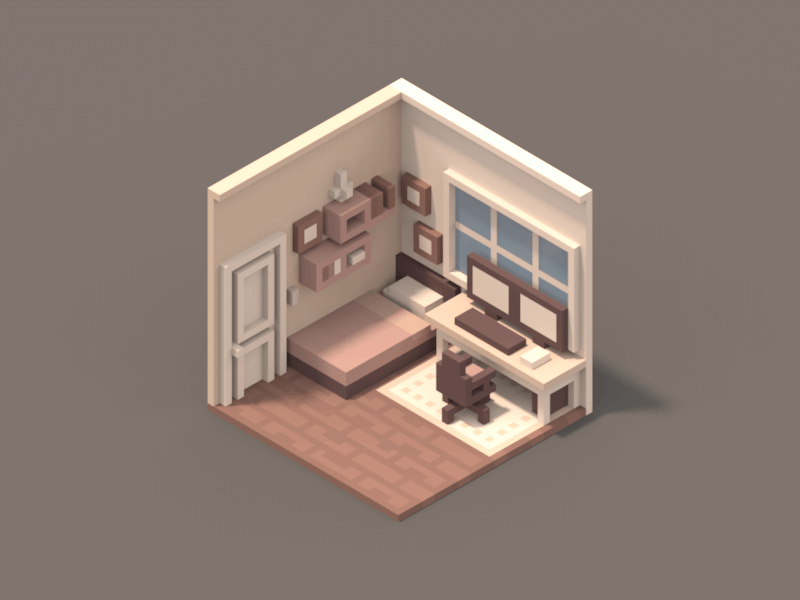 Week 02: Complex shapes |
 Week 03: Stop-frame animation |
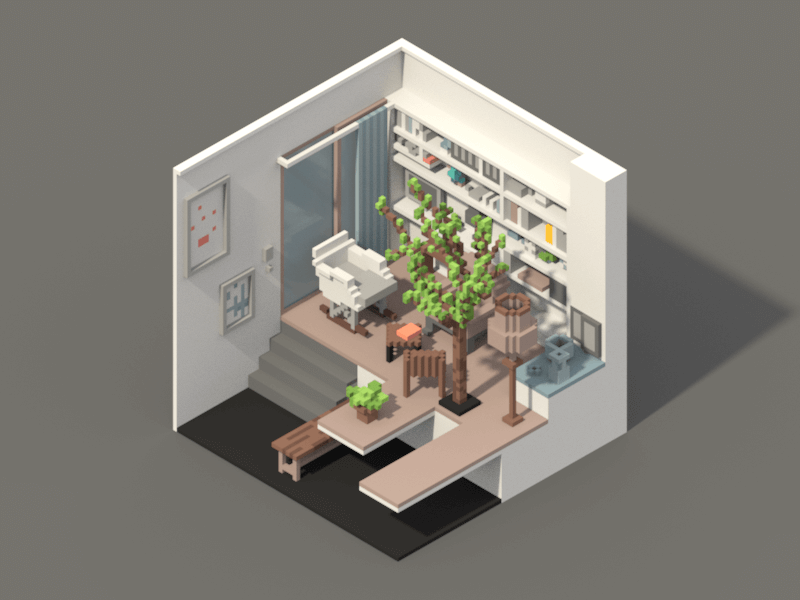 Week 04: Tripling the space |
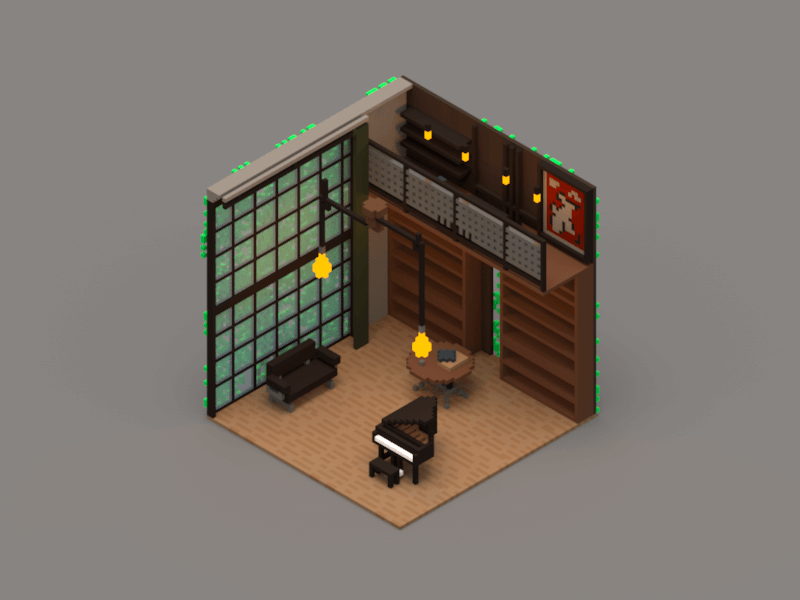 Week 05: Adding lights |
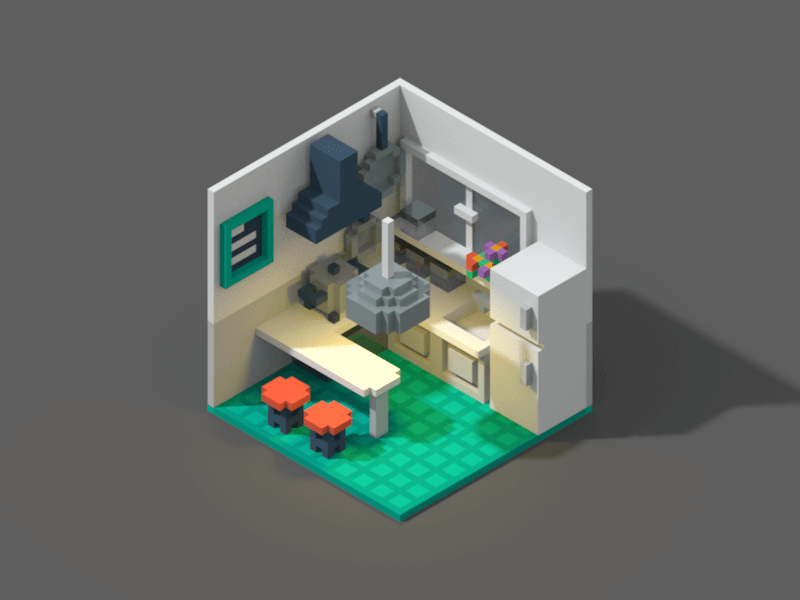 Week 06: Improve light rendering |
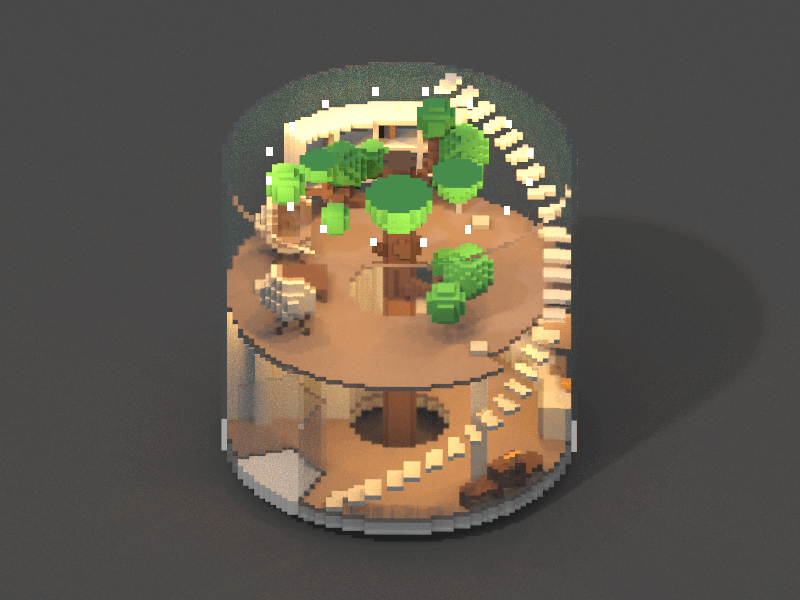 Week 07: Putting everything together |
That’s how a narrow focus can help you grow quickly. By the way, I also won SketchFab’s honorable mention and staff pick without knowing a thing about Blender between week 06 and 07.
My Blender learning curve was similar. It felt like I was relearning everything for a few weeks, but by that point, I already had a decent grasp of how to navigate the 3D world and could focus on learning the interface and the features.
2. Follow One High Quality Course
As I switched to Blender, the learning curve got steeper. I couldn’t just push random buttons with hopes that I’d just figure it out. At that point, I knew I needed to find one high quality course that I could follow.
You don’t want multiple sources, because they might overlap, and might even have contradicting point of views. Pick a single, high-quality source. Paying for it isn’t bad either. A good course is always a worthy investment. And that sunk cost can be your motivation—it surely was for me.
I always try to find a step-by-step guide that I can follow along with. However, I know a programmer who can just read through 3 textbooks on C# and learn how to code in it. Choose your preferred format but choose one guide and stick to it.
I spent some time looking and settled with the Complete Blender Creator: Learn 3D Modelling for Beginners course on Udemy (not affiliated). It has the highest example-to-content ratio, and I saw how I could follow one example each week and incorporate it into my weekly rooms. I got a steal on sale and bought it for just $15. Here’s my learning curve from week 08 to 14:
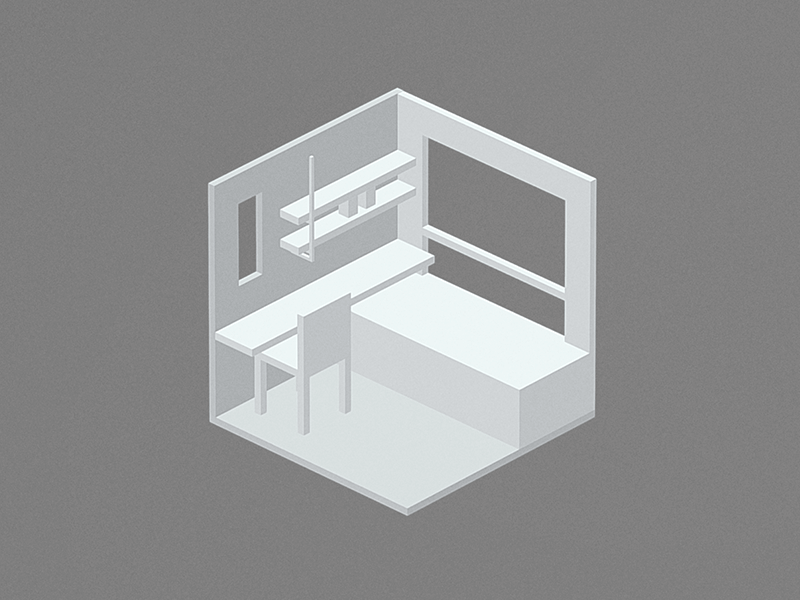 Week 08: Learning Interface |
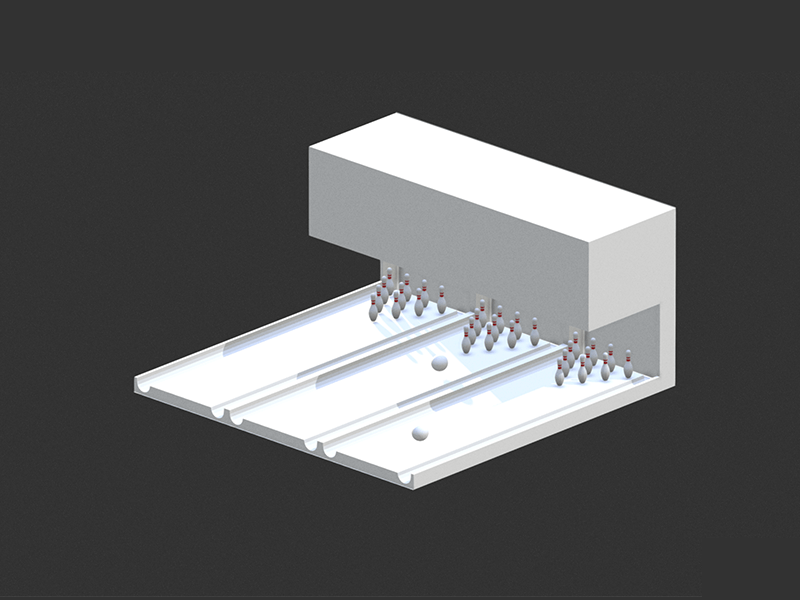 Week 09: Simple Shapes |
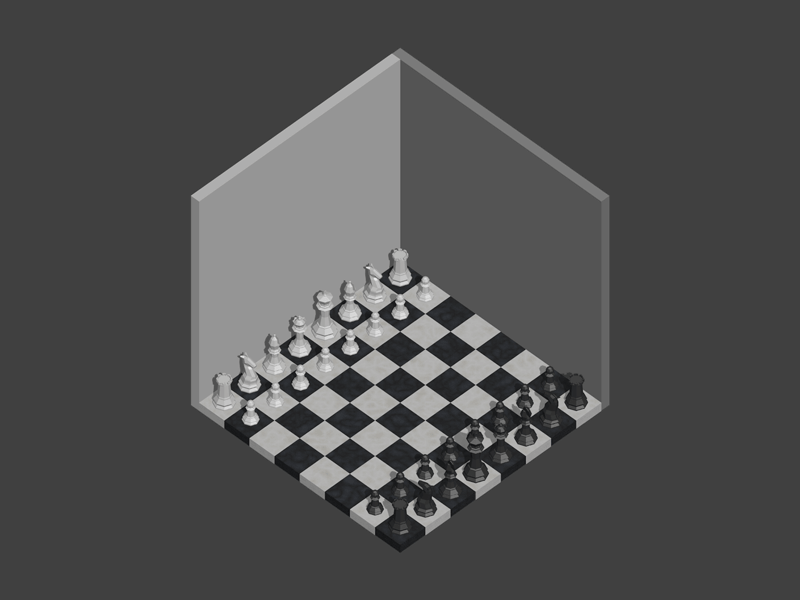 Week 10: More Complex Shapes |
I was relying on Sketchfab’s rendering because I haven’t learnt how to do it in Blender yet. I also bent the idea of the “room” to fit the Udemy course content (“Bowling balls and Pins” and “Low Poly Chess Set”). I consider them not too far-fetched. Ron and Harry played life-size Wizard’s Chess in a room after all.
At that point, the course went into animation. That looked like a lot. I stopped there and practiced with what I’d learned. The progression was similar to the MagicaVoxel rooms, but now in Blender with more varying shapes:
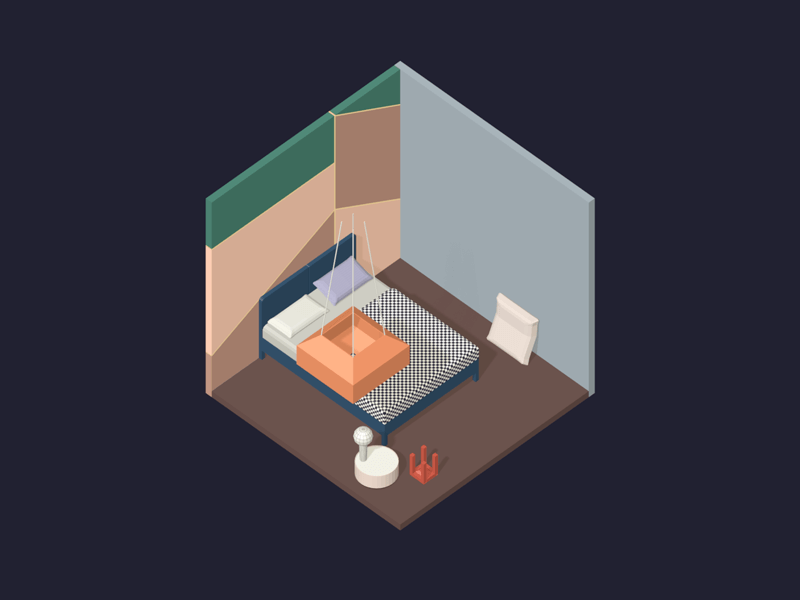 Week 11: Back to Reference |
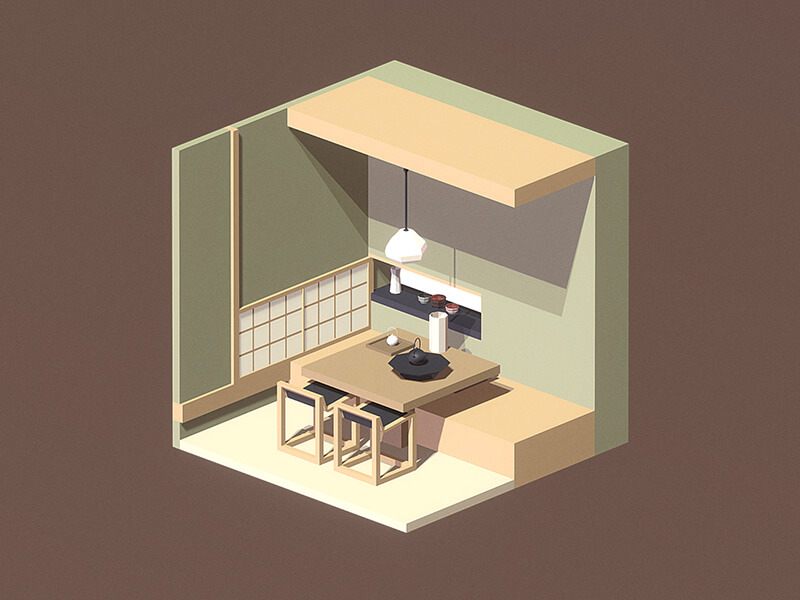 Week 12: Intricate shapes |
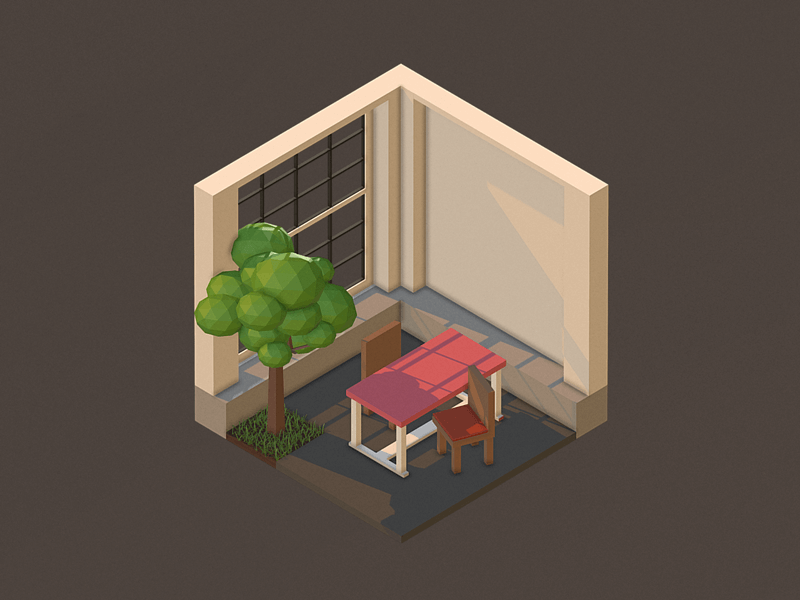 Week 13: Organic Shapes |
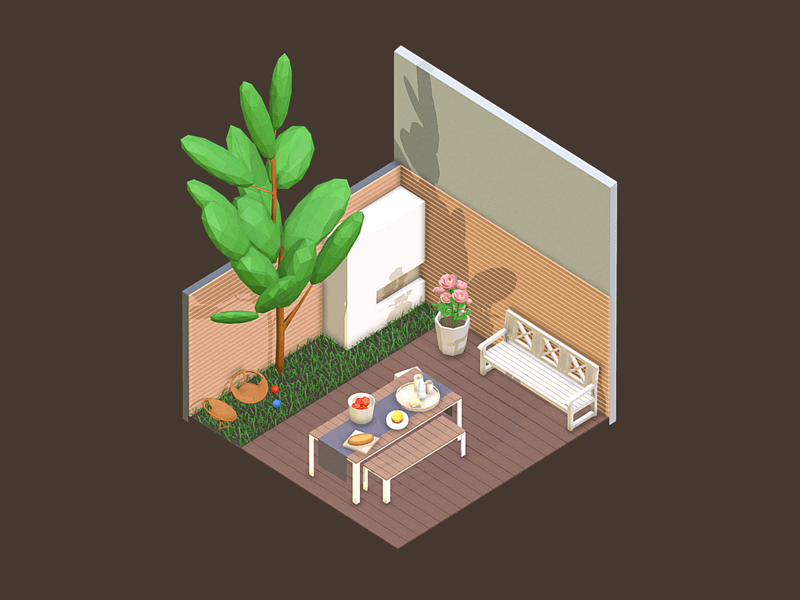 Week 14: Everything put together |
At that point, I felt confident that I could create a low-poly model of almost anything I want in Blender.
3. Cultivate 3D Sense at Every Opportunity
Another important piece of this journey was cultivating my 3D imagination at every opportunity, because I had none at the beginning.
My ability to understand and imagine things in 3D was so bad that I sucked at 3D games for my entire life. It was embarrassing when my friends urged me to try World of Warcraft. 75% of the time I was asking “Where am I?” “Where are we going?” “Wait, where are the enemies coming from?” and “No…” because I died again. The other 25%? I was just spacebar following someone. At least that was easy :) As a UX designer, I can easily see 2D designs in my head before I put down the pixels. Not being able to do the same in 3D was frustrating.
So, what did I do? Deliberate practice, but in fun ways.
The first thing I picked up is Minecraft. It’s a 3D game in its simplest format. Exploring caves and abandoned mine shafts, finding my way in roofed forests and ravines, I slowly grew from having to constantly cheat and check coordinates to having an idea about where I was going in winding tunnels.
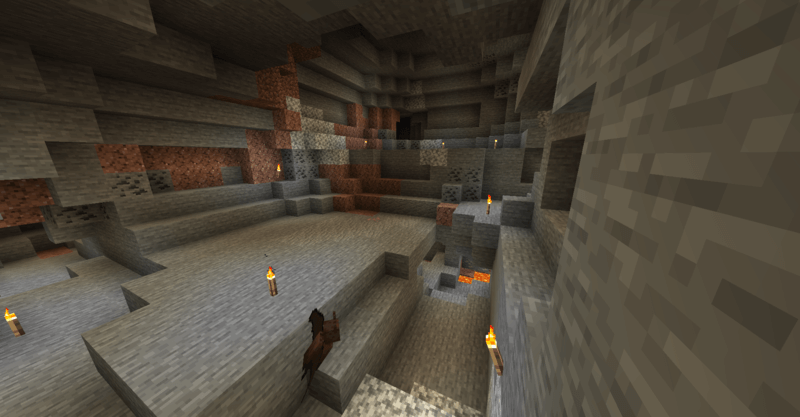 Source: Official Minecraft Wiki
Source: Official Minecraft Wiki
The other thing I did was signing up for a pottery class at my local community college. Physically holding clay in my hands and doing 3D modeling in real world gave me a fresh perspective, and the relatively slow pace gave me time to think.
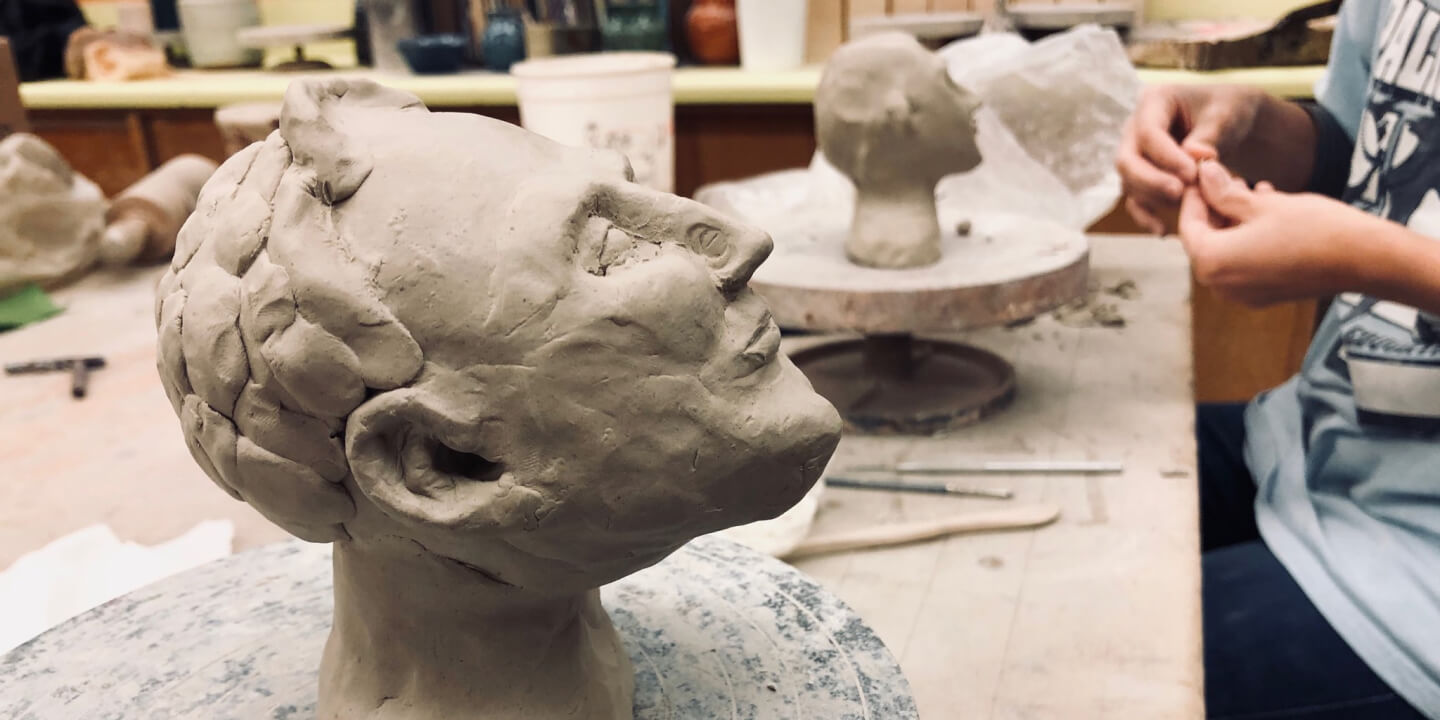
I now have a way better ability to see objects in 3D in my mind. And interestingly, it also helped my drawing—I had little real training and used to struggle with perspective a lot, but now that I’m better at imagining objects in 3D and turning them around in my mind, it really helps.
4. Enter Competitions
Now the last point, the secret ingredient: enter competitions.
We all need motivation to keep us going, and competition provides a clear objective, a clear timeline, and an opportunity to put our skills to the test. It’s especially fun to join as a newbie since you’ve got nothing to lose; and if by sheer chance you win something, that’s great external validation. Even if you lose, you will still have some really polished pieces, probably the best work you can do at the time.
I joined three Sketchfab competitions as I was learning 3D modeling.
My Ideal Planet (Voxel)
The first competition I entered was around week 06. I was lucky that a voxel challenge dropped while I was deep in MagicaVoxel.
The brief was about creating one’s ideal planet in voxel, and that immediately led me to thinking about how the little prince traveled to many planets. What’s the most ideal planet? Definitely the scenario in which he returns to his planet, with the little sheep in the box. The sunset planet was the only competition, but that would be relying on a sunset backdrop to work, not the modeling itself.
So I started, day and night, tackling a way larger canvas than I ever had before. To make the composition more interesting, I put the little prince at a diagonal angle, and that took a lot of trial and error. The little prince and his little sheep were the only two living characters I’ve ever modeled. I also picked up more MagicaVoxel to Sketchfab exporting skills along the way.
Although there are a lot of imperfections (my biggest regret is I put the volcano in the dead center of the orb, which makes it too uptight), my hard work paid off, and it got both an honorable mention and a staff’s pick!
Utopia (Low-poly)
The second challenge dropped around week 13. It was about creating futuristic utopian assets under 2k triangles, which was perfect for my skill level. I wouldn’t have a chance in many Sketchfab challenges. Having a limit on the number of triangles leveled the playing field a bit for me.
I took the opportunity to learn simple animation in Blender, and again, just so I’d have a slightly better chance at winning, I spent more time on lighting and rendering in those challenges than in my weekly room practices.
Here’s the final rendering:
It didn’t win me anything, unfortunately, but that’s expected. Even without any prize, it’s a very nice piece that I created towards the end of my journey, and I adore the end result.
Medieval Fantasy Asset Pack (Low Poly)
The last challenge, and the real proof of how far I’ve got in 14 weeks’ time, was the medieval game assets challenge. This is a highly competitive challenge, with far higher prizes (10x monetary value) than Sketchfab’s typtical challenge. I know I had basically no chance to win (take a look at the winning projects—I really had zero chance), but it was such a great concept.
I am a huge fan of Dungeons & Dragons, and I was scoping out my capstone project for my VR nanodegree at Udacity at the time. I saw the opportunity to morph the two projects into one and create the assets for a medieval-themed room escape game.
What’s more, it just so happens that the Udemy course I bought has an entire chapter on game asset packs. It’s like I kindled 3D-modeling-related things here and there, and they all led to this serendipity.
So I got to work. From modeling each component, to setting up a grid system so both external walls and roofs as well as internal decors and furniture were modular (my knowledge of design systems also played a role here), and then on to cycle rendering and baking lights… It’s amazing how much I learned just to do well in one challenge.
Beautiful rendering, lights, shadows, and textures. Definitely the best work I could have produced with my skill set.
That’s not all: because I spent the time and made everything modular, I don’t just have this one room. I have components that would allow me to make many medieval rooms:
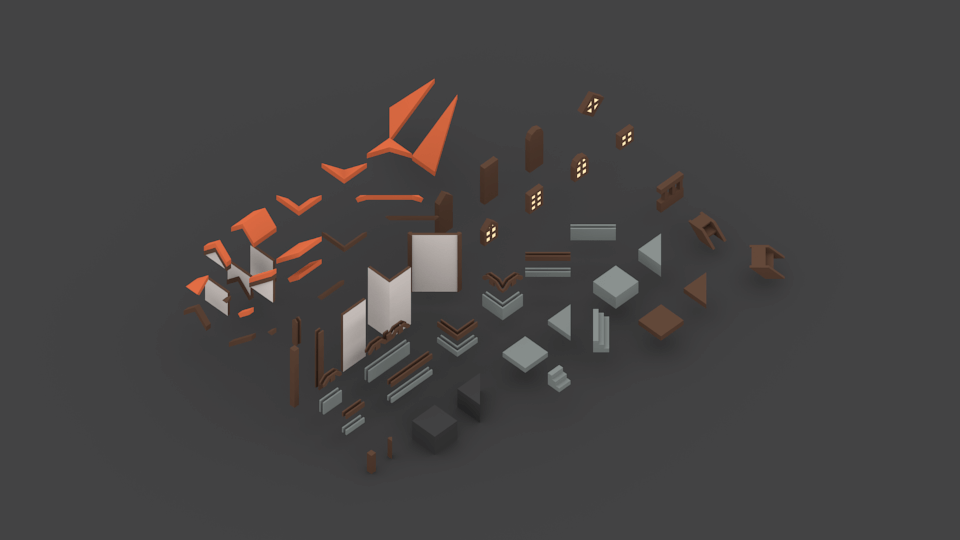 |
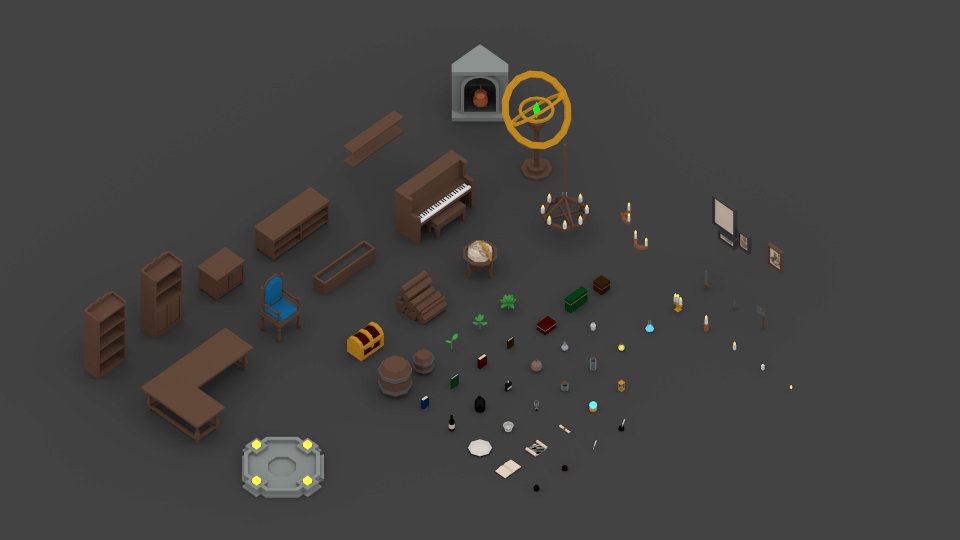 |
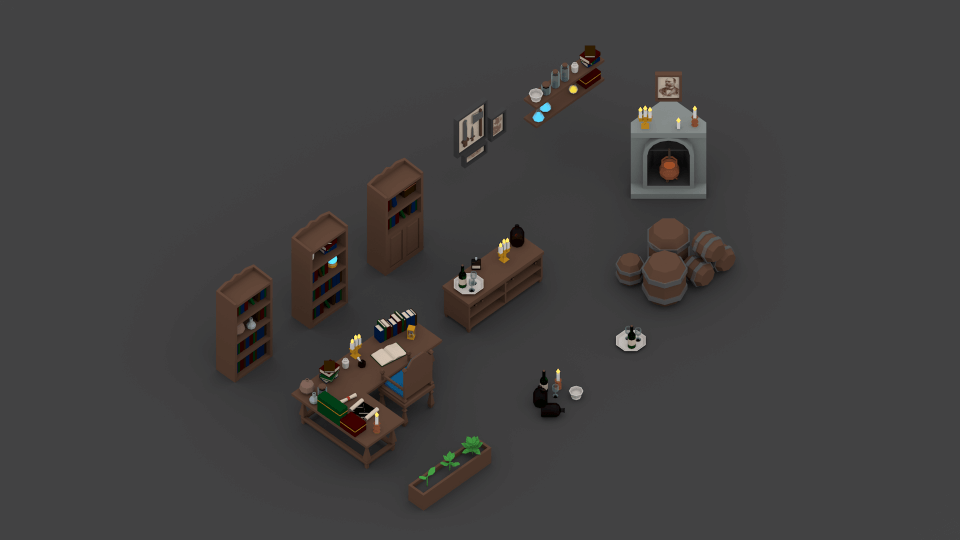 |
I put it in a repo so anyone who wants to create medieval rooms can make use them.
As planned, it also became the asset pack for my capstone project for the nanodegree program.
5. Make Many Pots
In Art & Fear there’s a famous story: At the beginning of a pottery class, the teacher told one group of students to focus on quantity and try to make many pots; and the other to focus on quality, making the one best pot. At the end of the semester, the group that made many pots won with a landslide—with the many pots that they made, they inevitably landed on a few great ones that are even better than the pots made by the group fully focusing on quality.
Looking back to all my works at the end of my 3D learning journey, it’s the same story. When I made each of my weekly rooms, I was never really focused on quality. But 2 out of the 14 rooms that I made, room 04 and 12, ended up being great. They both got more likes than the Little Prince planet that has won honorable mention and staff’s pick.
|
|
|
They look awesome by any standard. I couldn’t have planned for it. Nor can I spend some time today and create another one of the same level of quality. But I do know if I go back to it and make another 14 rooms, chances are good that I will get another great one.
This is how I learnt to create 3D models and many other things: practice deliberate and regularly, follow one high quality source, cease every opportunity, enter competitions, and finally, make many pots.
I hope you find this article useful. If you want to get an email every time I write something new, subscribe to the list below.
